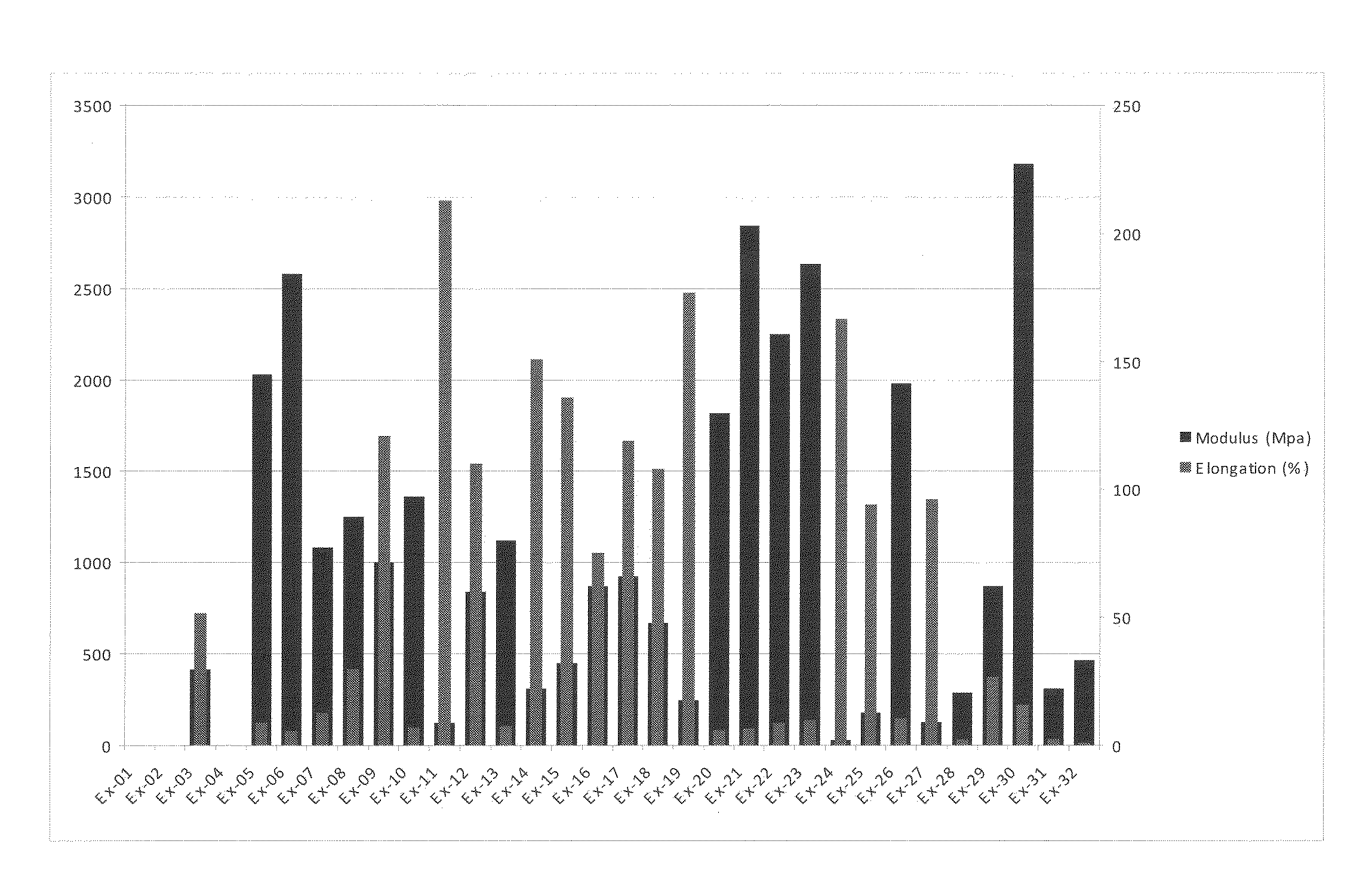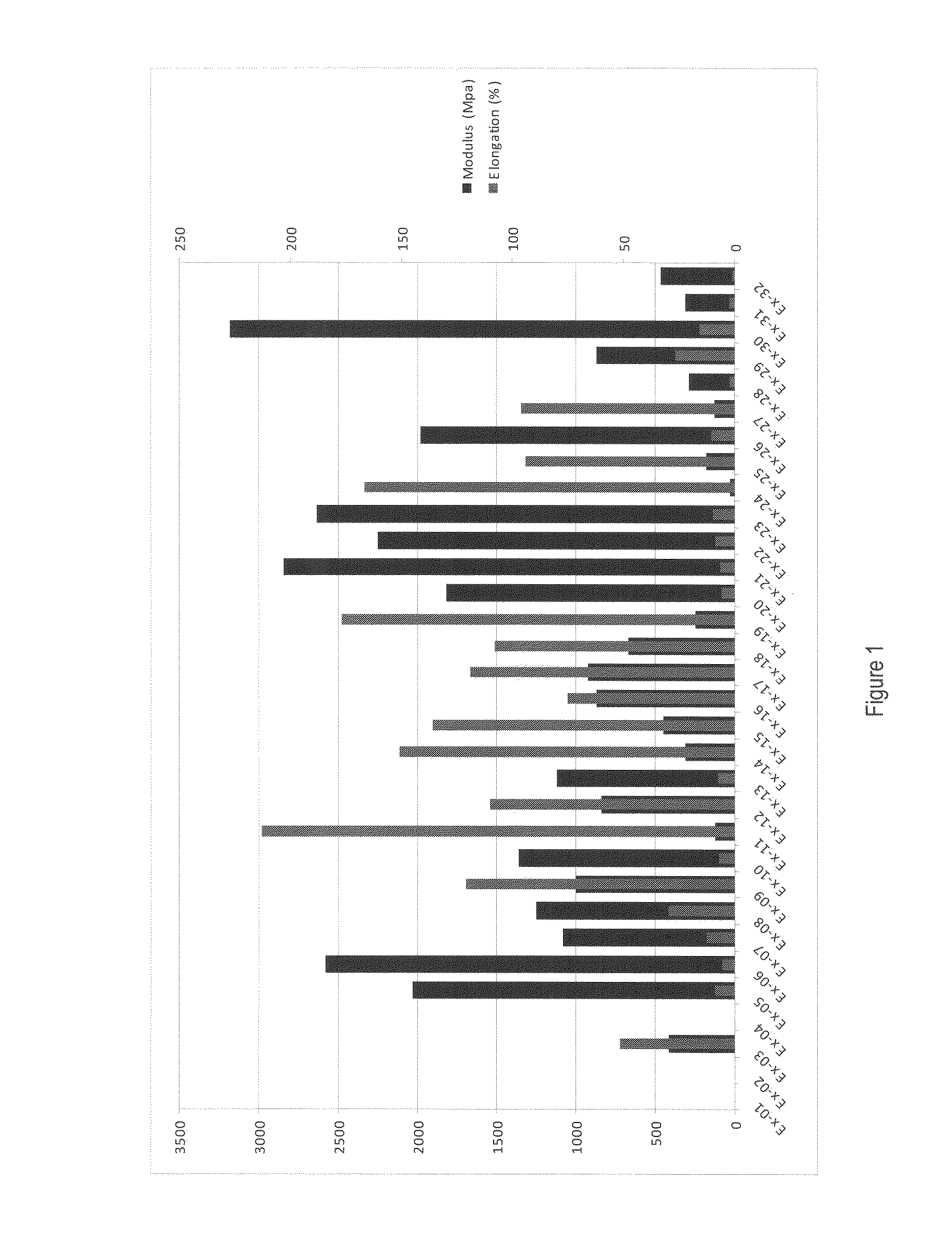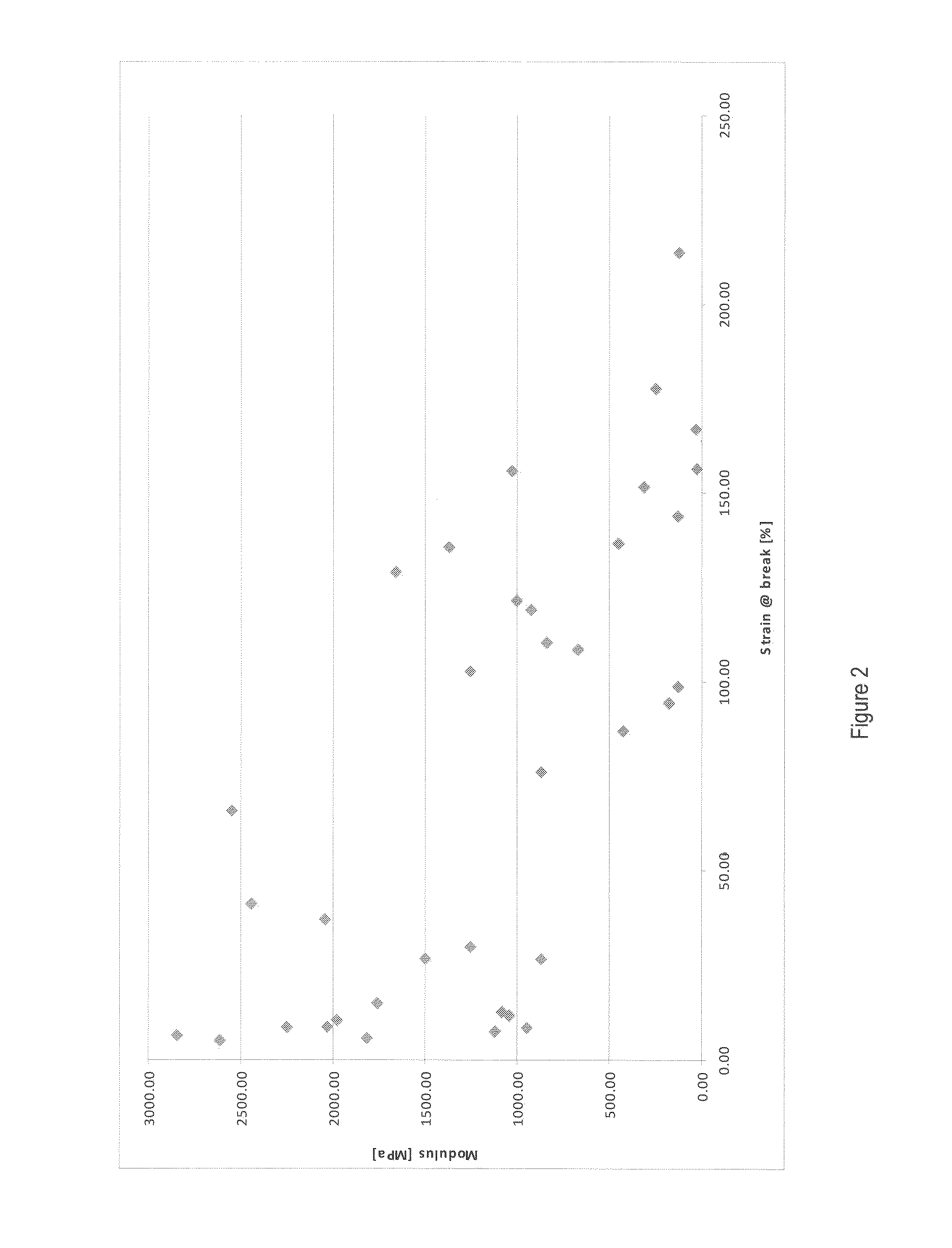Mouldable biodegradable polymer
a biodegradable polymer and moulding technology, applied in the direction of inks, household articles, synthetic resin layered products, etc., can solve the problems of difficult processing, difficult to meet the needs of production, and difficult to meet the needs of starch based polymers
- Summary
- Abstract
- Description
- Claims
- Application Information
AI Technical Summary
Benefits of technology
Problems solved by technology
Method used
Image
Examples
Embodiment Construction
[0030]The amount of starch, modified and / or unmodified, in the composition is limited by the required addition levels of all the other components: it makes up the balance. The starch may be derived from wheat, maize, potato, rice, oat, arrowroot, and pea sources. One preferred source is maize (corn) starch. Unmodified starch is a cheap biodegradable raw material from renewable resources that may contribute to the barrier properties of the final product and is therefore highly attractive for this application. However, its use is limited by the occurrence of retrogradation (crystallisation resulting in brittleness), limited optical clarity of the resulting formed products, limited film-forming properties and limited elasticity for stretching. One preferred concentration range for unmodified starch as a fraction of the total amount of starch is 0 to 50% although levels up to 100% may be possible.
[0031]The upper limit to the content of the modified starch is largely determined by its co...
PUM
| Property | Measurement | Unit |
|---|---|---|
| temperatures | aaaaa | aaaaa |
| temperatures | aaaaa | aaaaa |
| elongation at break | aaaaa | aaaaa |
Abstract
Description
Claims
Application Information
 Login to View More
Login to View More - R&D
- Intellectual Property
- Life Sciences
- Materials
- Tech Scout
- Unparalleled Data Quality
- Higher Quality Content
- 60% Fewer Hallucinations
Browse by: Latest US Patents, China's latest patents, Technical Efficacy Thesaurus, Application Domain, Technology Topic, Popular Technical Reports.
© 2025 PatSnap. All rights reserved.Legal|Privacy policy|Modern Slavery Act Transparency Statement|Sitemap|About US| Contact US: help@patsnap.com



